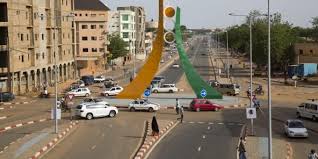When we first come to Niamey, the first idea that comes to mind is to imagine the country in one’s mind. How is Niger? How is the atmosphere in Niamey? What are the holidays like at the end of the year. As we landed on the tarmac at Hamani Diori airport, a ventilated sun greeted us. This is the harmattan. A dry wind blowing from the east and northeast over the Sahara and West Africa this representation flashed again in our minds. And here we are in Niamey. Hamani Diori is in a way the independence of Niger, which was overthrown in 1974 by a coup d’etat perpetrated by Lieutenant Colonel Senyi Koutché. But, from 1974 until 2010, the country faced relative instability which, compared to the last 10 years, is crumbling. A name is hidden behind this real policy: Mahamadou Issouffou. After spending 10 years maintaining the stability of the country and carrying out the structural transformation of the country economy, he has decided to step down from the presidential race and 30 candidates are ready to be passed the baton.
Outside the airport, a tiny group of people lurk around the parking lot. Most of the local phone chips are traded by young people. Salam, salam throw these in our direction. As we were conversing, a shuttle, called about thirty minutes ago, came to our rescue. In the vehicle, our interlocutor takes our news, but our idea is elsewhere, spying on the streets, shops, houses, in short the architecture of Niamey, for our first mission. However, the streets are almost deserted, apart from working-class neighborhoods like Yantala, Third Bank etc. We should have thought of an event that takes place in the city or a match that brings together football lovers in front of their screens at home. Nay! Niamey was emptied because of the presidential election. “A large part of the voters went to vote in their native region”, tells us a lady from Nigerien civil society. Curious to know the areas where they were able to go and the distance between these cities and Niamey, our interlocutor affirms that the distance between these cities and Niamey is sometimes far than Niamey-Abidjan. Because the city has an area of 1.267 million km2, almost four times the area of the Ivory Coast, almost the same number of inhabitants.
“Niamey has changed, the city did not look like this 10 years ago,” said the shuttle driver. For him, the outgoing president has raised Niger to the ranks of the countries that count in the WAEMU.
From our hotel, we can see most of the buildings including the Radisson, Noom, the convention center, the Mahatma Ghnadi center, the Islamic Bank, the Ministry of Economy and Finance, which give the city a new face. This is the business district, the Plateau. In the lobby of our hotel, we observe a ballet of people, who are for the most part members of civil society, heads of election observation missions, journalists and other consultants all present to bring their mark to this election. .



